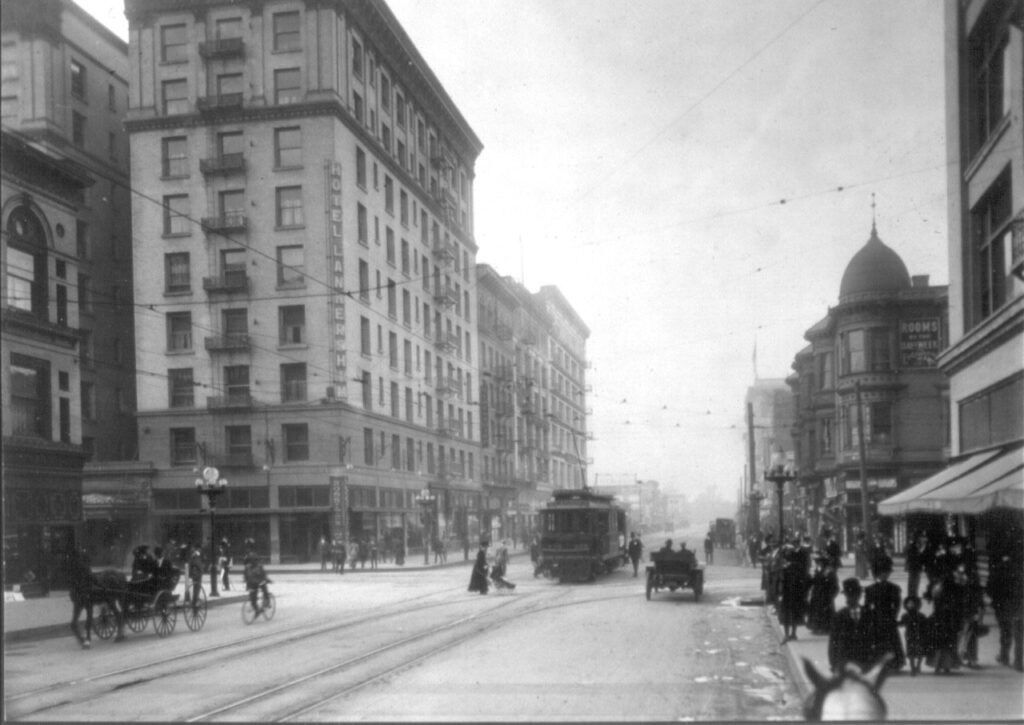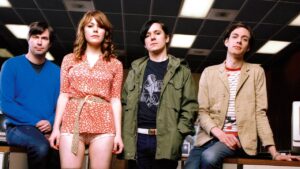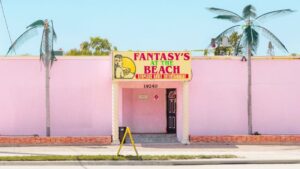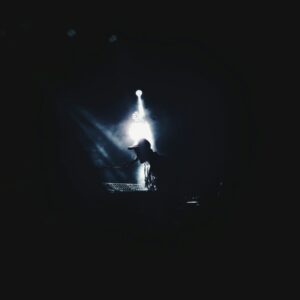LA’s Visitors Ordinance Went Into Impact 100 Years In the past. It Modified Streets Throughout America.

That is your first of three free tales this month. Develop into a free or sustaining member to learn limitless articles, webinars and ebooks.
Town of Los Angeles has rightfully gripped the nation’s consideration this month as wildfires rage on. Whereas the devastation induced by our altering local weather calls for superhuman effort to squelch it, the transportation sector (stubbornly liable for the best share of U.S. emissions) is mockingly observing a big milestone. January 24, 2025, marks the centennial of the implementation of the Visitors Ordinance for the Metropolis of Los Angeles. This 35-page bureaucratic doc redefined using America’s streets, tailoring them to the good thing about the automotive trade.
American streets have been as soon as dominated by individuals. A documentary travelogue of New York Metropolis (embedded under) captured by Scenska Biografteatern from 1911 is crowded with pedestrians crisscrossing streets of their every day routines. Trollies, carriages, and the occasional vehicle jostle by, unhindered by site visitors alerts or centerlines. To us right now, it might appear chaotic, however the tempo of the road is gradual, and folks navigate one another with fluency. San Francisco’s A Journey Down Market Road, shot only a yr earlier than the 1906 earthquake, reveals the view from a streetcar, picturing the Ferry Constructing on the avenue’s finish obscured by intertwining streetcars, horses, bicyclists, vehicles, and folks. Pedestrians stand undaunted within the middle of the road, ready to board the slow-moving streetcar. A boy playfully darts in entrance of the prepare, as if he’s difficult it to a recreation of tag. Rising up in American cities meant taking part in within the streets, even within the nation’s most dense neighborhoods.
This documentary travelogue of New York Metropolis in 1911 was made by a staff of cameramen with the Swedish firm Svenska Biografteatern, who have been despatched around the globe to make photos of well-known locations. (Video from The Museum of Fashionable Artwork)
Again then, individuals shared the roadway with streetcars and bikes. Within the early 1900s, Los Angeles had essentially the most in depth electrical streetcar system wherever. From Minneapolis and Chicago to Washington D.C. and New York Metropolis, bicycles have been utilized by men and women commuting to work within the Nineties. And so they weren’t alone. As Evan Friss chronicles in The Biking Metropolis, individuals rode bikes in U.S. cities as a lot as they now experience in Amsterdam and Copenhagen, the very best biking cities on the earth.
This was all earlier than the Los Angeles Visitors Ordinance was handed. The Ordinance was written by Miller McClintock, then a doctoral scholar of municipal authorities at Harvard College, who was recruited by a champion of the car trade, Paul Hoffman. Hoffman had dropped out of the College of Chicago to promote Studebakers at 18 years outdated. At 33, he was shut to creating his first million {dollars} within the trade and had been appointed chairman of the Los Angeles Visitors Fee – a physique liable for regulating streets. For the primary time, the Ordinance prioritized vehicles on town’s more and more congested roadways. It rapidly turned the template for the nation.
With a up to date eye, the provisions created by the Ordinance could appear extra logical than they have been to metropolis dwellers on the time. Historian and writer Peter Norton has spent his profession researching the car period and has properly documented it in his books Combating Visitors: The Daybreak of the Motor Age within the American Metropolis and Autonorama: The Illusory Promise of Excessive-Tech Driving. Norton has scoured letters to the editors of native newspapers, written by on a regular basis individuals who passionately argue for his or her place on American streets, simply because it was being usurped. With the anniversary of the Los Angeles Visitors Ordinance approaching, I interviewed him to know its significance.
Norton says that sharing streets all the time required negotiation, however earlier than the Ordinance, “the pedestrian had absolutely the proper to the road, to walk into it at any level, and to cross it wherever she selected… even a baby had the appropriate to the road.” This was a social norm, however as Norton’s analysis suggests, it was additionally defended by judges in U.S. courtrooms all through the nation. For instance, in Combating Visitors, he cites a Philadelphia decide who, in 1924, lectured drivers in his courtroom, saying, “It received’t be lengthy earlier than kids received’t have any rights in any respect to the road.” He decided that motorists deserved restraint if they may not assume the accountability of guaranteeing kids’s security and resolved, “One thing drastic should be carried out to finish this menace to pedestrians and to kids particularly.”
It might be arduous to think about right now, in a rustic the place the overwhelming majority of individuals commute by automobile, however in Los Angeles and lots of U.S. cities within the early twentieth century, most individuals didn’t use vehicles to get round. Nearly all of American ladies didn’t get driver’s licenses till the Nineteen Sixties, and if a household owned a automobile, males often monopolized using it. Folks typically walked, rode streetcars, or biked. Norton argues that whereas the transition to auto-dominated streets is usually seen because the arc of progress stimulated by shopper demand, it was truly a well-crafted marketing campaign produced by these with an curiosity in promoting cars.
The Los Angeles Visitors Ordinance modified who was prioritized on metropolis streets. Between 1914 and 1922, the variety of vehicles on the streets of Los Angeles quadrupled. To proceed to spice up gross sales, the car trade required an edge over its competitors with the streetcar and considered one of its benefits was velocity. On the time, a streetcar traveled at roughly 10-15 miles per hour, and with out devoted lanes, at even slower speeds once they have been blocked by vehicles. Within the Ordinance, McClintock imposed a 35-mile-per-hour threshold nearly all over the place apart from just a few restricted instances. However 35 miles per hour was unprecedented within the early twentieth century. In accordance with Norton, most cities held motor autos to eight–10 mile per hour speeds. In his phrases, the automotive trade realized that “If drivers can’t go sooner than a streetcar, then they’re not going to purchase a automobile, particularly if they’ve a streetcar service accessible to them…. So, we can’t afford to let velocity be the perpetrator in site visitors security.”
As a substitute of specializing in velocity, the Ordinance decried recklessness. Most significantly, it pinned “reckless conduct” on pedestrians relatively than rushing vehicles. The Ordinance calls out “jaywalkers,” criminalizing pedestrians who don’t “obey alerts” or who stroll outdoors crossings. “Jaywalking,” as soon as used as derogatory slang, was employed formally to repair attitudes towards wayward pedestrians. McClintock writes that “Excessive-speed motor site visitors makes the follow referred to as ‘jay-walking’ nearly suicidal” as an alternative of questioning the imposition of hurtling motor autos on streets occupied by individuals. As Norton suggests, “You may use precisely the identical info that he’s utilizing to say that driving at velocity is homicidal.”

The Los Angeles Report decribes the brand new Ordinance as much less brutal manner of “abolishing jaywalkers” than earlier strategies.
Within the 1920’s, site visitors accidents and fatalities have been climbing. In his e-book Combating Visitors, Norton observes that between 1920-1929 motor autos killed greater than 200,000 individuals in america (roughly 4 occasions the dying toll of the earlier decade), lengthy earlier than most adults drove. Horrifically, lots of these killed have been essentially the most susceptible, together with the aged and youngsters, particularly in dense cities the place the casualties have been the very best. The general public was naturally involved about security and the Ordinance addressed their issues in regards to the risks of blending vehicles and pedestrians, saying, “These conflicts account for the good majority of the accidents and fatalities in Los Angeles and in each different metropolis.”
Nonetheless, the Ordinance co-opts security as a tactic to make extra room for vehicles. For the “management and safety of pedestrian site visitors,” McClintock suggests proscribing pedestrians to striped crosswalks, raised platforms on extensive roads referred to as “security zones,” and even tunnels created to guard schoolchildren from motor autos. He overlooks the social lifetime of the road and even requires that pedestrians “not cease or stand on the sidewalk besides as close to as bodily potential to the constructing line” to treatment what he calls the “too frequent congestion of pedestrian site visitors by informal teams gathering on the sidewalk.”
The Ordinance didn’t change metropolis streets by itself. It was accompanied by a intelligent public relations marketing campaign focused at cultural norms and superior by E.B. Lefferts, president of the Car Membership of Southern California. Lefferts designed the marketing campaign to succeed the place different cities had failed. As Norton paperwork, Lefferts informed an viewers on the Chicago conference of the Nationwide Security Council that the Ordinance labored as a result of “We now have acknowledged that in controlling site visitors, we should consider the research of human psychology, relatively than method it solely as an engineering downside.” As Norton summarizes, Lefferts’ ways aimed to make individuals “really feel embarrassed, maybe ashamed… to really feel the sting of ridicule.”
Radio broadcasts aired a public training marketing campaign about conduct on the road, the Boy Scouts have been deployed to problem playing cards to offenders, letting them know they have been “jay-walking.” In the end, the police have been emboldened to blow whistles at anybody trying to cross the road towards the sign or outdoors marked areas–shaming them into submission. Norton found a number of instances the place individuals have been humiliated by cops who “picked up pedestrians… (largely ladies) and put them on the curb.” Those that protested this new therapy have been arrested.
The Los Angeles Visitors Ordinance established that streets wouldn’t be shared however dominated by vehicles. It was basically a land seize. As soon as the roadway was secured for the good thing about motor autos, they have been the heavyweight champion on streets that had as soon as been for everybody. The Ordinance required that pedestrians have been “topic to the identical instructions and alerts as govern the motion of autos” with out acknowledging that they have been exceptionally susceptible. Dealing with the mass of a rushing automobile, no different customers of the roadway may compete within the bodily battle to assert the streets.
By upping speeds on American streets and designing them for accelerating vehicles, motordom prevailed. Even right now, Norton says “we nonetheless maintain the view that you simply attempt to make quick driving protected as an alternative of signaling to drivers that they must be paying consideration and slowing down.”
The logic of the Los Angeles Visitors Ordinance quickly made its manner into the Mannequin Municipal Visitors Ordinance, which handed in 1928 underneath the path of Herbert Hoover, then the Secretary of Commerce, in shut session with the car trade. It turned the template for related ordinances all through the nation. As Norton maintains, “Nearly all over the place you go whenever you’re coping with the native guidelines… they’re descended from this ancestor, the Los Angeles Visitors Ordinance.”
McClintock went on to writer a proposal for “foolproof highways,” within the mid-Nineteen Thirties, promising security by way of gradual turns, grade separations, and streets for the unique use of the car—once more with the promise of accelerating speeds. These highways would in the end deliver extra vehicles into the hearts of city areas, with a rising human toll. Outpaced by vehicles, and bullied to the margins, bicyclists additionally misplaced their place on the highway. Ultimately, streetcar tracks have been pulled up, some changed by buses. Nonetheless, mass transit was more and more restricted as tax {dollars} secured by the Freeway Belief Fund have been erratically divided by an 80-20 break up favoring spending on highways.
Sadly, dedicating streets to vehicles didn’t assure security. In 2021, greater than 43,000 individuals died on U.S. roads. Vehicles have change into bigger, sooner, and heavier, making them much more lethal, particularly to kids. In America, from the time a baby can stroll till she reaches maturity, being hit by a automobile has been the primary explanation for dying for a lot of many years (surpassed solely not too long ago by firearms).
Norton objects to our collective historical past informed as if auto dominance was the inevitable path of progress. He has uncovered the mass of people that urged the nation in a special path. “It was peculiar Individuals from all walks of life, wealthy and poor, Black, Brown and White, female and male who have been objecting to their lack of using the road.” Amongst them was Philadelphian Barnett Wartell who, because the Mannequin Municipal Visitors Ordinance was being deliberated, urged Hoover to guard individuals on roads. Wartell describes the appalling lack of his sons to what he identifies as “murderers.” Wartell’s 9-year-old was killed on his stroll residence from college by a truck that jumped the curb on his stroll residence from college, and his 18-year-old was run over by a automobile on his bike in a hit-and-run and left to bleed to dying.
Wartell was considered one of many bereaved dad and mom whose letters crowded the native papers. Their protests continued within the Nineteen Fifties when women-led “child carriage blockades” obstructed streets so kids may play safely outdoors. Norton acknowledges that “it’s extremely useful to get well these misplaced views as a result of then we will step out of the views that we grew up in, and that we have been socialized into, and have a look at them afresh with new eyes and presumably see alternatives.”
As jaywalking legal guidelines are repealed in cities and states throughout the nation, as congestion pricing removes cars from the guts of the biggest U.S. metropolis to pay for transit, as pandemic-era open streets evolve into new everlasting city parkways, and as a brand new administration hangs its hat on advancing “freedom,” Norton encourages us to rethink the 100-year historical past ushered in by the Los Angeles’ Visitors Ordinance. He suggests a brand new model of our historical past that avoids the false promoting that Individuals have all the time had a love affair with the car. Maybe with the brand new area allotted on our streets, and the legal guidelines that govern them, we are going to reclaim the cultural historical past we gave up and the liberty of alternative we as soon as exercised in order that at any age, we will stroll, bike, and experience the place we need to. “If we get well that historical past,” says Norton, “we empower ourselves in selecting different futures.”
This piece has been up to date to appropriate the final identify of Barnett Wartell.





